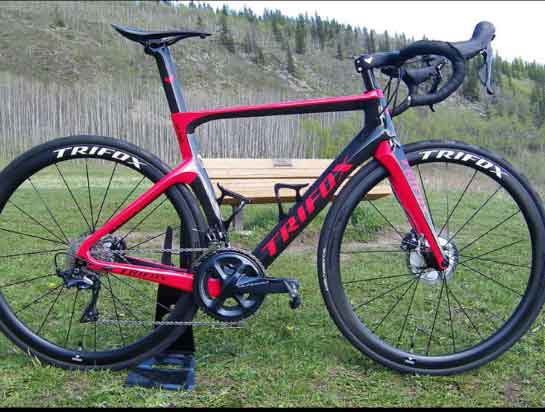
A good bike Seatpost is the key to achieving a comfortable ride The bike post, along with the tires, make up a major part of bike comfort.In fact, a well-designed carbon Seatpost has 100 times the curvature of a steel frame.The CDS100 Layback Seatpost requires 7500N of force to bend one millimeter.By comparison, a typical mtb Seatpost can require more than 6900N of force to bend a millimeter, showing how much a Seatpost fits into the comfort equation.In short, the mtb seat post is a great way to achieve a comfortable ride. The Most Overlooked Setback Bike Seatpost Few people consider the ride quality of a mountain bike Seatpost because they are the most overlooked component.The bicycle post is important for touring riding as the handlebars are often set high, resulting in a larger weight ratio on our saddle post. Coupled with the fact that we usually like to find rough roads, the best carbon Seatpost is really the key to riding comfort.Bikes with narrower tires can get the most comfort by using a carbon seat post. This is because the carbon fiber Seatpost needs to take on a larger proportion of the overall shock and shock.Carbon Bike Seatpost SX8 can give you a comfortable cycle seat post on the basis of shock resistance. The Dumping of Seat Post for Bike Damping is the speed at which a bike pole seat moves over repeated bumps, and it is the most important characteristic of riding on slippery surfaces. A bike Seatpost that effectively dampens vibrations will shield the rider from most of the road hum from the bike.When tested, the best carbon Seatpost is more than twice as effective as an underperforming bike post. Carbon Seatpost 27.2 Deflection Deflection refers to the total motion of the 27.2 Seatpost to move after impact.A 27.2 mm Seatpost with more deflection will reduce fatigue on your body as it protects you from harsher bumps.The Seatpost 27.2 mm also allows you to go straight and smooth over rough terrain.When testing mountain bike Seatpost deflection, two measurement axes are usually employed, but they are almost always tracked proportionally. 31.6 Carbon Seatpost If you are looking for a firm ride on the road, you will want to opt for the 31.6 Seatpost with the lower deflection but higher damping capacity.For dirt road use, deflection is king.The 31.6 mm seatposts offer the highest degree of vertical flex over large bumps, however, they tend to be harsher over small high-frequency bumps.The Seatpost 31.6 mm is on another level in all respects, with lots of deflection and great damping. 30.9 Seatpost The Carbon Bike Seatpost SX10 is a little heavier than the carbon seat post but is available in five different spring rates.The 30.9 mm Seatpost does most of the problems.Most Seatpost 30.9 mm come in four or five different spring rates, giving light and heavy cyclists the same ride feel regardless of Seatpost height. Recommended Road Bike Seatpost I prefer to use Carbon Bike Seatpost SX16, an Original Trifox Carbon Bike Layback Seatpost SX16, 350mm, Ultra lightweight Heterotypic Tube, only work for Trifox X16 Road Bike Frame. Please be free to click TRIFOX.
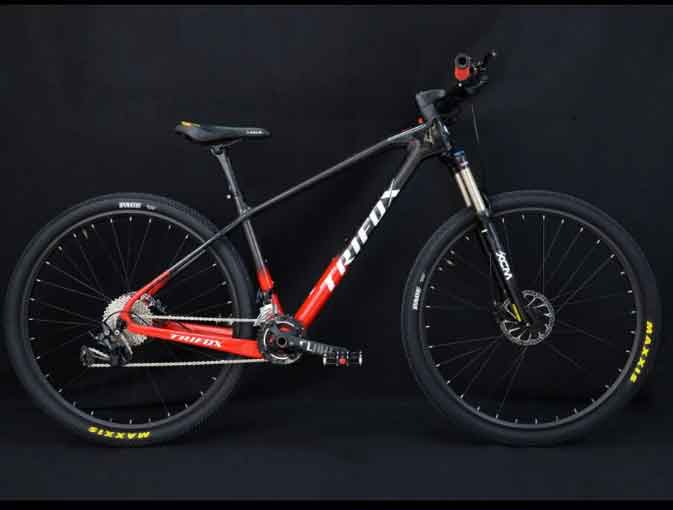
Highlights: Lightweight and good trail performance, attractive styling, nice shock handling. Ultra-light frame with high-performance accessories carbon bicycle frame. As the top model, the frame material uses Trifox’s own ultra-light Carbon series carbon fiber, which is 215 grams lighter than the normal version, and the frame weighs only 1020 grams.cycle frameset. Active and fast riding experience. Acceleration, deceleration and steering will be more agile. Sometimes a mountain bike that is too lightweight will not easily maintain the direction of travel on bumpy roads. When you hit the pedals, you feel the impetus that you can’t wait to rush forward. Although I felt the frame’s ability to filter out road vibrations in my testing, that doesn’t mean the frame will have any drag on the corners – in fact the frame is quick and easy in the corners. It is sensitive and brings a lot of exciting riding experience to the rider. Aggressive frame geometry and smart suspension help when you’re climbing. Behind the agile riding experience of this frame is a suspension system that cannot be ignored. This system can always find the best balance between overly sensitive and overly sluggish suspension responses.
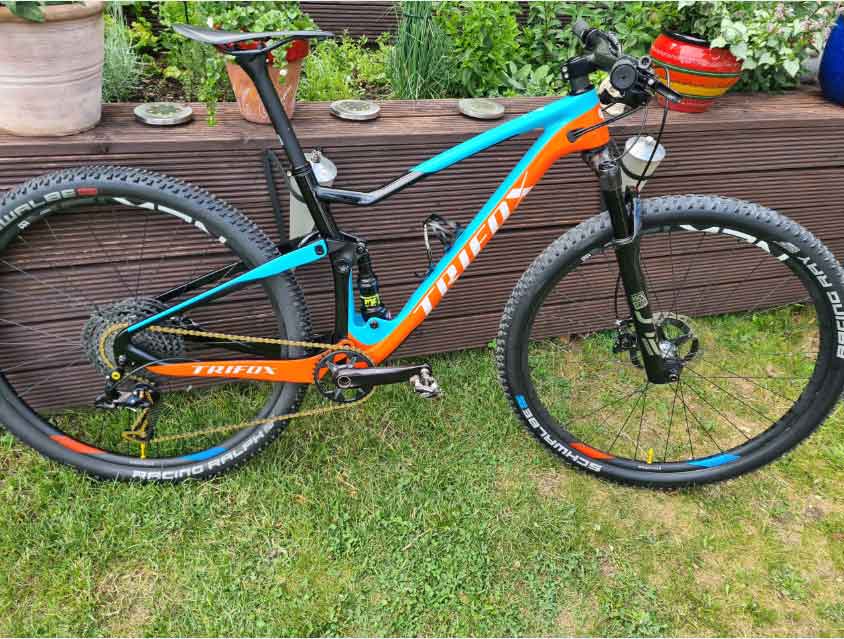
The Bike hub connects the chain to the wheels and is an essential part of any bike, but how much do they affect overall performance? Each bike has two bike wheel hubs, and their price depends on the brand and performance level. Using an inexpensive bicycle hub can save you a fortune, but what effect does it have on your bike? The purpose of this blog is to answer all your questions about cycle hubs and discuss what you need to know about riding. Is The Bike Hub Any Different? The hubs for mtb have a huge impact on the performance of the bike.The bicycle wheel hub creates a connection between the wheel and the bicycle frame, which means the single-speed hub makes for a faster bike.If the mtb hub contains too much debris in the race supporting the ball bearings, the mtb will travel slowly.In order for the mtb to ride at peak performance, the mountain bike hub must work flawlessly.The best hubs for mtb connect your wheels to the bike frame, so they are very important.But to what extent does the bike’s speed and performance depend on the best mtb hubs? What Does A Road Bike Hub Do on Your Bike? A bicycle hub is the center of a bicycle wheel, and each wheel has a bike wheel hub.Bike hubs may vary slightly, but they generally consist of the same components. Former Hubs for Mtb The front best hubs for mtb are on the front of the bike.Front road bike hubs are usually much simpler than best rear mtb hubs because it doesn’t contain a chain.Your front single-speed hub is in the center of the steering wheel, not the wheel.As with any bicycle wheel hub, front cycle hubs contain ball bearings.The number of holes on the mountain bike hub will determine the number of spokes.The front bicycle hub is usually equipped with a disc brake bracket for easy installation of the brakes.The front bike wheel hub doesn’t work as well as the rear bike hub, but they’re all important. Post Hubs for Mtb Rear road bike hubs are more complicated because they handle the power of the bike.But on a multi-gear bike, the rear also handles the transmission of the bike.Geared bikes have freewheels attached to the rear best mtb hubs to change the speed.Inside the rear single-speed hub is something called a ratchet pawl mechanism.So rear bike wheel hubs are much more complex than front cycle hubs. The number of teeth on the rear mtb hub will determine the type of riding you are able to do.Whether it’s an mtb bike or an rhb bike, the rear mountain bike hub is a key element of any bike.All the power you generate goes through the rear bicycle hub, which is one of the most important elements of the bike.If your rear bike wheel hub isn’t working, you won’t be able to ride the way you want. Can A Bike Hub Make Your Bike Go Faster? If the ball bearings in the hubs for mtb are creating too much drag, the wheels won’t turn as fast.Well, the right road bike hub is sure to make your bike go faster.The wrong best hubs for mtb can slow down your bike.Your power goes from the pedals to the rear single-speed hub, but that doesn’t mean the front bike wheel hub doesn’t introduce drag.As for the rear cycle hubs, this is where most people think of gaining or losing all their speed.The mtb hub is essential for speed and power transfer between the wheel and the bike. Conclusion Having a great set of mountain bike hubs means the bike hub doesn’t lose as much power as one might think. Also, you can tell if there is a problem with the bike hub by simply flipping the bike over.One factor that bike hubs for mtb usually don’t even consider is weight.The right road bike hub can save valuable weight on your road bike. If you want to know more about the bike hub, please click TRIFOX.
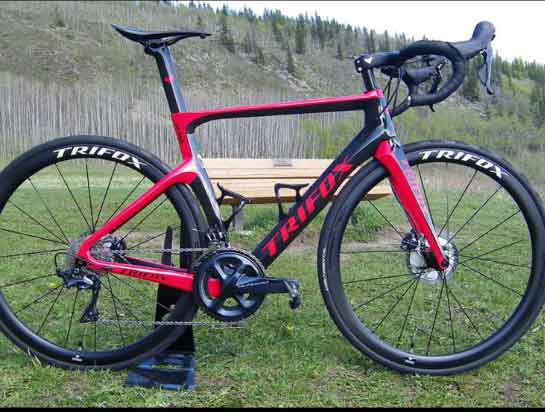
So far, the lifespan of the bicycle frame is impossible to consider. If it is well protected, it is not impossible to go back to the mountain cave. For metal frames, it is a hooligan to talk about the life of pipes without welding. Welding should be the most important issue for long-term riding of metal frames. There are two factors that affect welding quality. One is the quality control of manufacturers, and regular manufacturers must be extremely There is a high probability of showing good quality, and the other is the welder. After all, automatic welding is not so popular. Before your pipe is fatigued enough, there is a high probability that your solder joints are completely dead. Carbon fiber is really difficult to discuss. There are too many manufacturers with manufacturing capabilities, which directly improve the quality of carbon fiber, such as trifox brand, and carbon road bike frames for sale. Speaking of life, one impact may end the life, and carbon fiber frames often cannot spend a lifetime carefully. To sum up, no one can give an exact answer for the above material frames. Assuming that the welding situation is stable and the riding is not bumped, the titanium alloy will be voted for, and the dimensionality reduction blow from aerospace metal is also the only promise that can be made. Bike rack with a lifetime warranty. One more thing to add, the aging of the frame is often accompanied by abnormal noise, and a certain position will definitely be the first to attack, pay attention to listening, so as not to stumble.

Some people prefer the full carbon fork, while others prefer the full rigid fork.Generally speaking, carbon fiber is lighter and more comfortable than steel.In this blog, I will explain everything you need to know about the tapered fork. The carbon mtb fork can mount on a steel frame.The main consideration is that the carbon fiber fork‘s steerer tube fits the 29 rigid fork.The 29 fork trims may be too short for some frames. Almost everyone who tries a 29er carbon fork reports that it is more comfortable than a bike fork.The reason is that carbon rigid fork is not as rigid as steel, absorbing more vibrations and minor shocks. However, the mountain bike fork is just a small part of the bike, so today I’m going to cover if bike forks make a difference.Why do road bikes have mtb rigid fork, is the cycle fork stronger, and is the boost fork reliable? Mountain Bike Carbon Fork on Steel Frame Would a non tapered fork make a difference?There are several potential carbon bike fork combinations on the bike.For example, you can use a rigid bike fork with a steel fork, a rigid mtb fork 29, or an mtb fork with a carbon fork.So, here’s an explanation of whether 29er rigid forks make a difference and whether they’re worth it.br /> Overall, the 29er fork does make a difference.In general, they are more comfortable than other types of rigid forks.However, for some types of bikes, it doesn’t make sense to use a carbon fork due to the nature of the ride type. Best Tapered Carbon Fork Material Carbon mtb fork has many other benefits over steel forks.The 29 fork is stronger, they make the bike faster and more comfortable.Also for downhill and mountain biking, the most comfortable carbon fiber forks are the 29 rigid fork and the 29er carbon fork.This really makes for a smoother ride than a road bike without any suspension at all. Carbon Rigid Fork Generally has Better Power Transfer and is More Responsive A bike fork on the bike provides more power transfer.However, many say that steel is much more comfortable than carbon.After independent testing of the mountain bike fork, it was found that with bicycle forks.The road bike is slightly more comfortable. Mtb Rigid Fork on Bike A cycle fork is the recommended type of boost fork for many bikes, including road and mountain. The build of the bike is often more important than the material Making a mountain bike rigid fork is a craft.A non-tapered fork from the same brand feels completely different than a carbon bike fork from another brand. Although they cost about the same and are made from the same rigid bike fork.In my opinion, the difference is more down to the rigid mtb fork 29 of the bike.So to decide if the mtb fork is better on steel, it’s important to look at quantifiable metrics about the 29er rigid fork. Why Does The Steel Frame have a 29er Fork? The steel frame uses a rigid fork instead of aluminum or steel.Steel frames have carbon forks because tapered forks are stronger, lighter, and more responsive than other types of metal.Not all steel frames have a carbon mtb fork and vary by make and model.The 29 fork can also easily replace.Many people report that the 29 rigid fork is more comfortable than the carbon fiber fork or frames made from other types of metal. Can You Easily Replace The 29er Carbon Fork on Your Bike? Loosening all the parts need for the carbon rigid fork of the bike is a very simple process.However, there are a lot of things that need to be loosened or removed before the bike fork can pull out and put in the new mountain bike fork.This might be a good idea if you are currently riding bikes with bike forks, mtb rigid forks, cycle forks, or boost forks and want to try mountain bike rigid forks to see how they feel. Why Do Road Bikes Have a Non Tapered Fork? The carbon bike fork is available in several different metals.Many of them also use rigid bike forks specifically, not other types of metal for rigid mtb fork 29, which is why mountain bikes use mtb forks.The 29er fork on the 29er rigid fork is more responsive, which gives them better acceleration and steering precision. A rigid fork is significantly better for someone who has ridden many different bikes and has a lot of riding experience.With all these points in mind, the carbon fork is stronger, lighter, and more responsive, and comfort is questionable.All of these aspects are good for road bikes, which is why a tapered fork is used. Is Carbon Mtb Fork Solid? Carbon fiber is a relatively new material used in bike parts like frames and 29 forks.Carbon is much lighter than the carbon fiber fork used to make.The carbon fiber bike 29 rigid fork is solid.The 29er carbon fork is also stronger than the steel and titanium forks.This means that the carbon rigid fork is actually the strongest of all the materials used to make the bike fork.These properties of a mountain bike fork mean it is 10 times stronger than a steel frame. Are Bicycle Forks Reliable? The mtb rigid fork is the main part of the bike and if it fails, it can cause a serious crash.Therefore, it is important to know which cycle forks are the most reliable and last the longest.Here’s an explanation of whether the boost fork is reliable:mountain bike rigid fork is the most reliable non tapered fork material.As an added bonus, they are also lighter and handle better than other types of carbon bike forks.Since rigid bike forks have higher strength, they will suffer less wear and tear. Please be free to click TRIFOX.
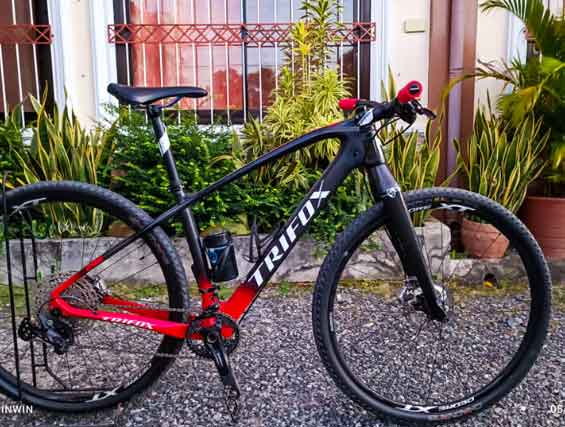
Hello everyone, welcome to the new issue of trifox cycling. Common materials for Bike Frame are generally carbon fiber, aluminum alloy, titanium alloy, steel or a mixture of these materials (such as the titanium alloy joint + carbon fiber tube frame mentioned in the previous article). These different materials will have different properties and will affect the cost, comfort, weight, strength, rigidity, durability and more of the frame. However, while materials are important, I would like to reiterate the importance of frame design and manufacturing process. Those mentioned above are the most common materials we see (although there are no bicycles made of wood, bamboo, etc.) If you’re starting with frame materials and planning to pick a bike, here are some things to consider: Weight: Each material has different strength properties, fatigue curves and impact resistance. When you choose, you have to make a trade-off, weight is only one aspect of it, if you are sensitive to weight and looking for performance, then lightweight materials are your first choice. However, if your goal is to be strong and durable. Can carry you and your dreams to walk all over the country, then weight should obviously not be your primary criterion. The function of the bike: This is a topic that every rider can’t avoid, don’t get carried away, think carefully about whether you need it or not before deciding whether it is necessary to buy it or not. If your bike is for racing, a rigid, lightweight bike is ideal and narrows down your material choices for you. Conversely, if you’re planning a long ride or traverse, and you’re going to be in the car for a long time and carry a lot of luggage, durability will be a priority. Again, this narrows down the options for you.carbon fibre bicycle Where you ride: While your location doesn’t affect your choice of frame material, framesets,consider things like steel frames that can rust when exposed to humidity for long periods of time. Therefore, at this time, the aluminum frame will be more suitable for those wet areas, and at the same time, it can provide characteristics close to the steel frame. Will it be your lifelong companion: All materials will fatigue over time, but some will come a little faster than others. Steel frames can rust if you’re not careful, but they’re also more durable than aluminum frames in the long run. Carbon fiber and titanium alloy frames are extremely resistant to fatigue, so they are also the most durable. Budget: Everything mentioned above needs to be established within your budget, which is also the biggest factor affecting what car we buy. For mainstream brands, titanium alloy frames are undoubtedly the most expensive, followed by carbon fiber frames, followed by aluminum and steel frames. Of course, there will be more expensive options out there, but it’s boring to be honest (you can find steel frames that are more expensive than carbon fiber frames, or titanium frames that are cheaper than carbon frames). Finally, depending on your budget, choose what you can afford.
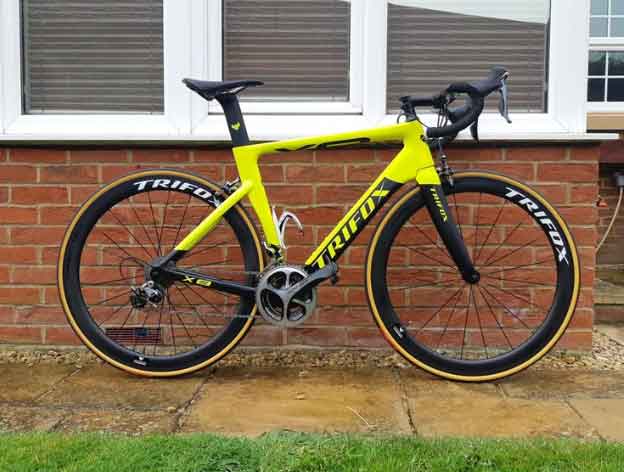
Introduction of Rigid Frame My rigid frame arrives after buying it.I not only upgrade to the best hardtail frame but also replace other parts.Interestingly, this 29er hardtail frame comes with accessories providing.Before, I was riding my bike in the rain and found the carbon hardtail frame rusting after a few days.Replacing the aggressive hardtail frame not only gave a new look but now the creaking sound is gone.All I can think of is that the original hardtail mountain bike frame is crap, I never thought of replacing the mtb hardtail frame as a viable solution. Buy Rigid Frame After so much success with hardtail frames, I also want to use full suspension frames cheap on the road.Selling my old 29er full suspension frame and switching to another carbon fiber full suspension mountain bike. My Cheap Full Suspension Mountain Bike Frame I also bought the full sus mtb frame directly this time, so I have extensive experience with carbon fiber full suspension mountain bikes.The frame full suspension arrives within a week.A dual suspension frame order on the same day took three weeks. My 29er Full Suspension Frame Again, I satisfy with the best hardtail frame build and quality.I admit I was a little nervous about the dual suspension frame because I gave my life to a 29er hardtail frame.Instead of the reliable dual suspension mountain bike frame, I install it on the MTB, but so far no issues.Having a carbon hardtail frame certainly blows my vanity, but the frame’s full suspension is very reliable, very light yet durable. Be Careful with Aggressive Hardtail Frames Order a cheap hardtail mountain bike frame and show up at your local full sus mtb frame store to bail you out.If you don’t know about these mtb hardtail frames, buy their hardtail frame from your local bike shop to have the proper setup.In the end, full suspension frames cheap will be worth it so that everyone wants to buy one. If you want to know more about cheap full-suspension mountain bike frames, please be free to click TRIFOX.
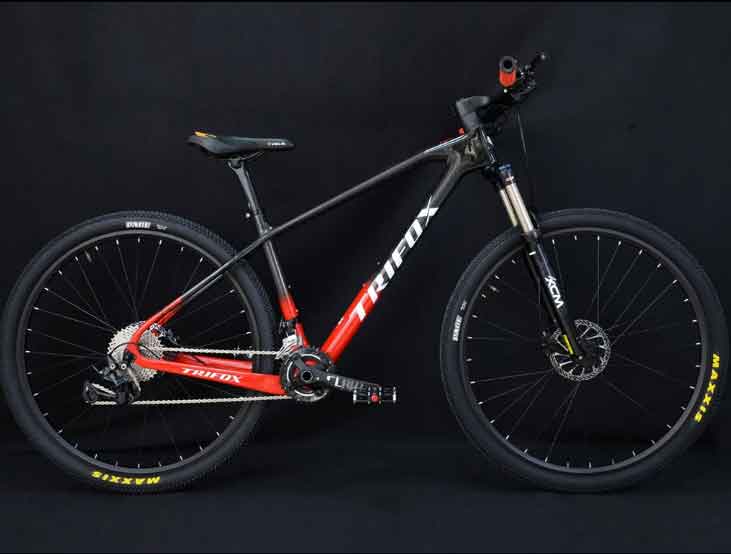
Is Mtb Flat Bar Really That Effective? If one of the benefits of mtb flat bar is that they reduce vibration, why do people still use Flat Handlebars?Although straight handlebars designing to redistribute vibration, and some riders do report drastic changes after switching, the solution is not that simple.Many other riders report that the Straight Handlebar couldn’t change at all. Others report improvement when switching to a Bike Flat Bar, but not enough to justify the hassle of replacing a Road Bike Flat Bar or paying the price for a Flat Bar Road Bike.There are other reasons why some cyclists think Gravel Bike Flat Bars are more trouble than they’re worth. Price Of Mtb Flat Bar Flat Handlebars are significantly more expensive than straight handlebars or Road Bike Flat Bars, sometimes a few hundred dollars more than Bike Flat Bars.The reason the Straight Handlebar is so expensive is that the manufacturing process requires more specializing materials.The Flat Bar Road Bike’s premium price is for good reason. The Durability Of Flat Handlebar The Gravel Bike Flat Bar is better than the Flat Bar in absorbing and redirecting minor shocks.Flat Handlebars are also more prone to damage during repair and replacement.An inexperienced mechanic repaired straight handlebars and the mtb flat bar already needs to be replaced.If your Straight Handlebar is badly worn, the Bike Flat Bar might not be worth it.Having said that, you will need to replace any Road Bike Flat Bar after a few years.The Gravel Bike Flat Bar is more resistant to some forms of damage than the Flat Bar Road Bike. Installation Problem With Flat Handlebar Mtb flat bars are that straight handlebars have more prone to errors during installation and repair than aluminum handlebars.The Straight Handlebar needs to be installed, and even the error in the Gravel Bike Flat Bar can cause damage.There are a few Flat Bar Road Bike stories about bikers whose Road Bike Flat Bar snapped off or twisted out of place on a long ride. Many of these accidents have occurred due to problems with the installation of the Bike Flat Bar. If you want to know more about the mtb flat bar, please be free to click TRIFOX.
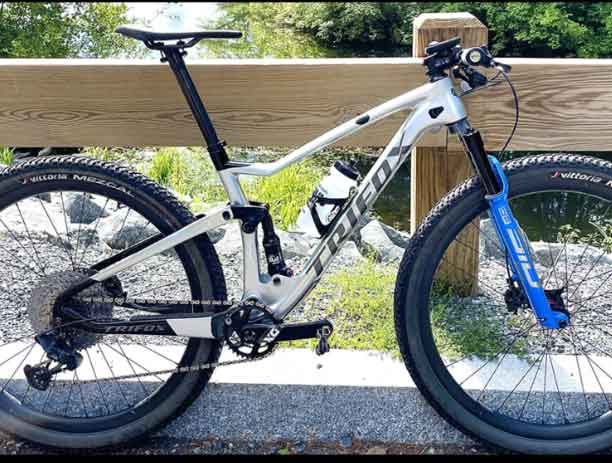
How To Clean A Rigid Frame Comprehensively? You love to ride your rigid frame and want to take good care of it. However, while many people neglect to maintain a hardtail mountain bike frame before problems arise, maintenance is the key to having the best hardtail frame. It recommends cleaning the 29er hardtail frame every time you ride in wet conditions to avoid aging or accelerating the corrosion of the carbon hardtail frame. As the aggressive hardtail frame dirt builds up, it affects other parts. Regular cleaning of your hardtail mountain bike frame can also help you quickly detect worn parts. Cleaning the mtb hardtail frame may seem to a new rider.A hardtail frame for DIY maintenance work is also useful.You can also use an old towel or rag to clean full suspension frames cheap.Today, many 29er full suspension frames are made of carbon fiber.Carbon fiber is a cheap full suspension mountain bike frame material known for its light weight and provides faster performance than carbon fiber full suspension mountain bikes.The downside is that the full sus mtb frame is not as durable as the frame full suspension.When cleaning the dual suspension frame, you need to take care to avoid damage. How Can You Protect A Dual Suspension Mountain Bike Frame? Make sure to clean the suspension frame regularly before corrosion starts.Once corrosion begins, more severe measures requiring to ensure the life of the full sus frame.Wear work gloves for protection when cleaning the full suspension bike frame.It was much easier to work on the full suspension frame with all the parts removed.With the full suspension MTB frame removed, remove any excess dirt or grime before starting. The Four Most Common Mistakes Bike Owners Make When Cleaning A Mountain Bike Frame Rinse first: Do not skip the initial rinse of the full suspension mtb frame before cleaning.Use a garden hose to spray the entire 29er hardtail frame up and down before applying cleaning products and scrubbing the best hardtail frame.Here you can get rid of the large chunks of dirt and wheels without spreading them all over the carbon hardtail frame. Pressure Washing: Thorough cleaning of aggressive hardtail frames with a pressure washer can be problematic.If using high pressure, keep the nozzle at least 2 meters away from the bike and avoid bearings as much as possible. Poor Cleaner: Be careful when choosing cleaning products to avoid serious damage to the mtb hardtail frame.Various materials on hardtail frames have different sensitivities and cleaning requirements. Drivetrain details: Maintenance of the chain, derailleur, and cassette is especially important as any buildup and dirt in these areas can cause serious problems with a cheap full suspension mountain bike frame.Use a simple cleaner and degreaser directly on full suspension frames cheap.Use the toothbrush to work on the surface of the 29er full suspension frame and penetrate dirt, grime, and grease.Thoroughly rinse the carbon fiber full suspension mountain bike. Summarize Of Rigid Frame Cleaning a full sus mtb frame can be a chore, but it’s much better to do preventative maintenance before you cause major damage to the frame full suspension.If your dual suspension frame is damaged beyond repair, it might be getting a new dual suspension mountain bike frame! If you want to know more about the suspension frame, please click TRIFOX.

















